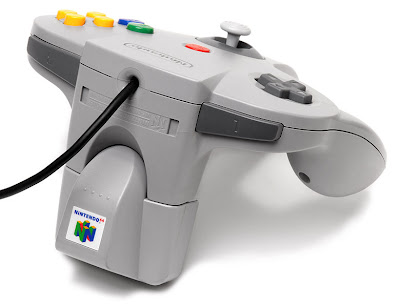Have you ever been playing a video game when the controller starts vibrating and shaking in your hands to correspond to the on screen action? Whether it’s from the kickback of your gun in a shooting game, the slow rumble as a bigger spaceship rattles your small craft in a space game, a bone crunching sliding tackle in a football game or the bumps and shakes as you veer off track in a racing game, physical feedback via the controller has been prominent in gaming since 1997.
The idea of vibrating controllers was introduced to Nintendo 64 gamers in 1997 with the release of Star Fox 64. The game is an epic space battle adventure as gamers pilot their Arwing spacecrafts and Nintendo wanted you to feel every bump, crash and blast on your way through the game. To do this they bundled the game with the ‘Rumble Pak’ unit which plugged into the memory card slot on the controller. The ‘Rumble Pak’ contained a small vibrating motor, similar to the DC motors used in mobile phones, that would vibrate when your ship come under fire or you crashed and allowed you to feel the action as it heated up on-screen. The motor corresponded to the action on screen so the speed of the motor and therefore the vibration matched the intensity of the action.
 |
| The 'Rumble Pak' plugged into a Nintendo 64 controller. |
So since it pioneered a feature that is mostly standard in controllers these days, how did the ‘Rumble Pak’ work? The unit needed two AA batteries to operate and the feedback of the plug-in was created by a simple DC motor that held an unbalanced weight. When power was supplied to the motor, the weight span and since it isn’t balanced it would cause the motor to wobble. With the motor being secured though, the wobble of the motor would make the controller vibrate which created the physical feedback for gamers.
No comments:
Post a Comment